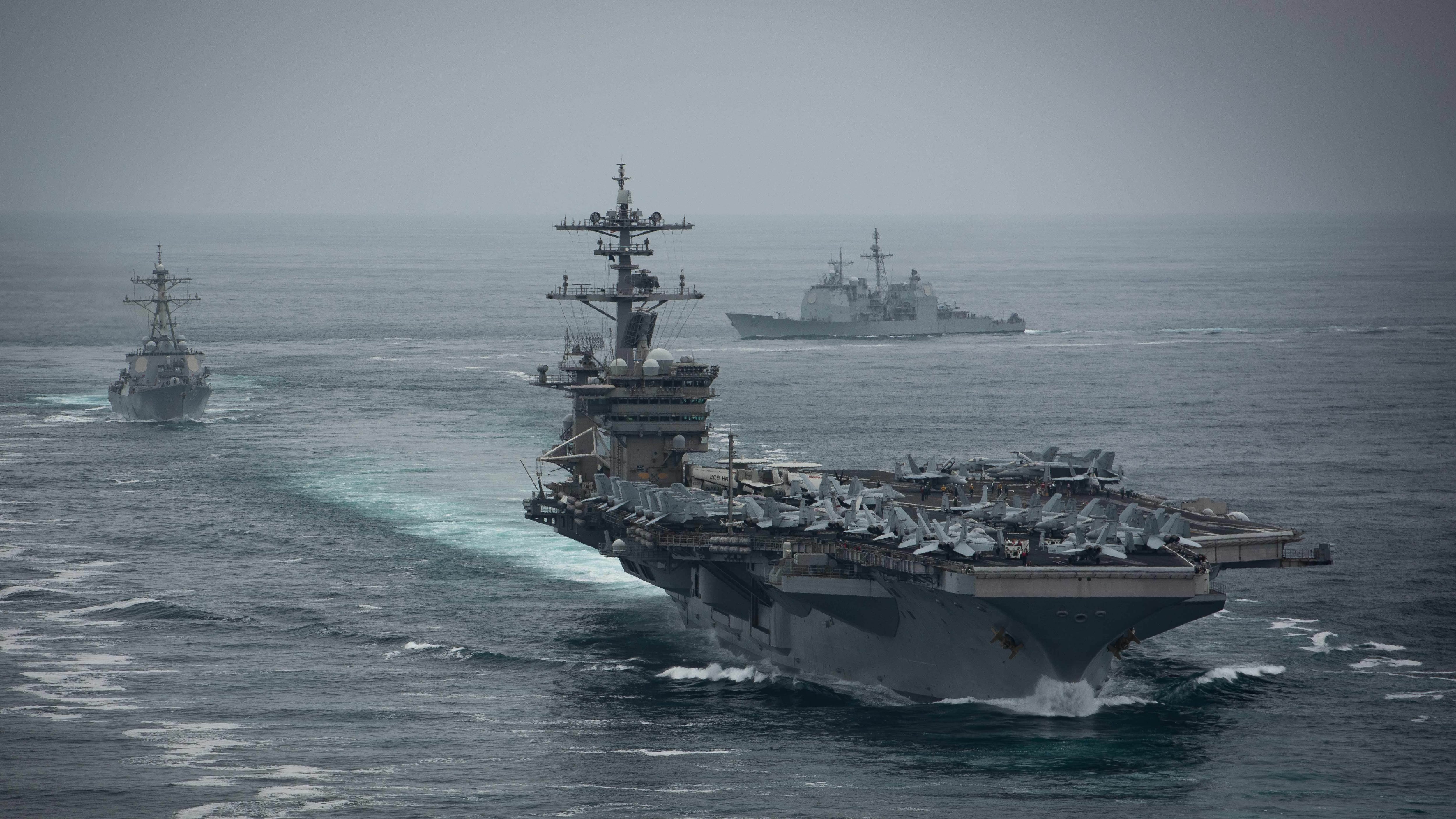WASHINGTON — The U.S. Navy’s new top officer is doubling down on the service’s commitment to field the new generation of nuke-launching submarines.
Adm. Michael Gilday, who assumed office as the chief of naval operations in August, visited General Dynamics Electric Boat in Quonset Point, Rhode Island, on Tuesday. He reiterated in a release alongside the visit that the Columbia-class ballistic missile submarine remains the Navy’s top priority.
“The Navy’s first acquisition priority is recapitalizing our Strategic Nuclear Deterrent — Electric Boat is helping us do just that,” Gilday said. “Together, we will continue to drive affordability, technology development, and integration efforts to support Columbia’s fleet introduction on time or earlier.”
The service has been driving toward fielding the Columbia’s lead ship by 2031, in time for its first scheduled deployment. Construction of the first boat will begin in October 2020, though the Navy has been working on components and design for years.
Two generations of submariner CNOs have emphasized Columbia as the service’s top priority. Gilday has made clear that having a surface warfare officer in charge has not changed the service’s focus.
RELATED

In comments at a recent forum, Gilday said that everything the Navy is trying to do to reinvent its force structure around a more distributed concept of operations — fighting more spread out instead of aggregated around an aircraft carrier — would have to be worked around the Columbia class, which will take up a major part of the service’s shipbuilding account in the years to come.
“It’s unavoidable,” Gilday said, referring to the cost of Columbia. “If you go back to the ’80s when we were building Ohio, it was about 35 percent of the shipbuilding budget. Columbia will be about 38-40 percent of the shipbuilding budget.
“The seaborne leg of the triad is absolutely critical. By the time we get the Columbia into the water, the Ohio class is going to be about 40 years old. And so we have to replace that strategic leg, and it has to come out of our budget right now. Those are the facts.”

The latest assessment puts the cost of the 12 planned Columbia-class subs at $109 billion, according to the Congressional Research Service.
Having nearly 40 percent of the shipbuilding budget dominated by one program will impact the force, which will force the Navy to get creative, the CNO said.
“I have to account for that at the same time as I’m trying to make precise investments in other platforms,” he explained. "Some of them will look like what we are buying today, like [destroyer] DDG Flight IIIs, but there is also an unmanned aspect to this. And I do remain fairly agnostic as to what that looks like, but I know we need to change the way we are thinking.”
Renewed push for 355
While the 12-ship Columbia-class project is set to eat at 40 percent of the Navy’s shipbuilding budget for the foreseeable future, acting Secretary of the Navy Thomas Modly has renewed calls to field a 355-ship fleet.
The 355-ship goal, the result of a 2016 force-structure assessment, was written into national policy and was a stated goal of President Donald Trump.
“[Three hundred and fifty-five ships] is stated as national policy,” Modly told an audience at the USNI Defense Forum on Dec. 5. “It was also the president’s goal during the election. We have a goal of 355, we don’t have a plan for 355. We need to have a plan, and if it’s not 355, what’s it going to be and what’s it going to look like?”
“We ought to be lobbying for that and making a case for it and arguing in the halls of the Pentagon for a bigger share of the budget if that’s what is required,” Modly added. “But we have to come to a very clear determination as to what [355 ships] means, and all the equipment we need to support that.” In a memo, he said he wants the force to produce a force-structure assessment to get the service there within a decade.
Modly went on to say that the Navy’s new Integrated Naval Force Structure Assessment, while will incorporate Marine Corps requirements, should be presented to him no later than Jan. 15, 2020. The Navy plans to look at less expensive platforms to reach its force-structure goals, which will likely include unmanned systems. But Congress has shown some reluctance to buy into the concept because of the sheer number of unknowns attached to fielding large and medium-sized unmanned surface vessels.
The newly released National Defense Authorization Act halved the number of large unmanned surface vessels requested by the service, and skepticism from lawmakers toward the Navy’s concepts appears unlikely to abate by the next budget cycle.
That means the 10 large unmanned surface vessels, or LUSV, the Navy programmed over the next five years seem unlikely to materialize at that rate. The Navy envisions the LUSV as an autonomous external missile magazine to augment the larger manned surface combatants.
But the drive to field less expensive systems to execute a more distributed concept of operations in large areas such as the Asia-Pacific region is being pushed at the highest levels of the government. In his comments at the Reagan National Defense Forum over the weekend, Trump’s national security adviser said the military must rethink how it buys its equipment.
“Spending $13 billion on one vessel, then accepting delivery with elevators that don’t work and are unusable is not acceptable,” O’Brien told the audience, referring to the troubled aircraft carrier Ford.
“The National Security Strategy and National Defense Strategy are clear: We must be ready for an era of prolonged peacetime competition with peer and near-peer rivals like Russia and China. ... The highest-end and most expensive platform is not always the best solution.”
David B. Larter was the naval warfare reporter for Defense News.






